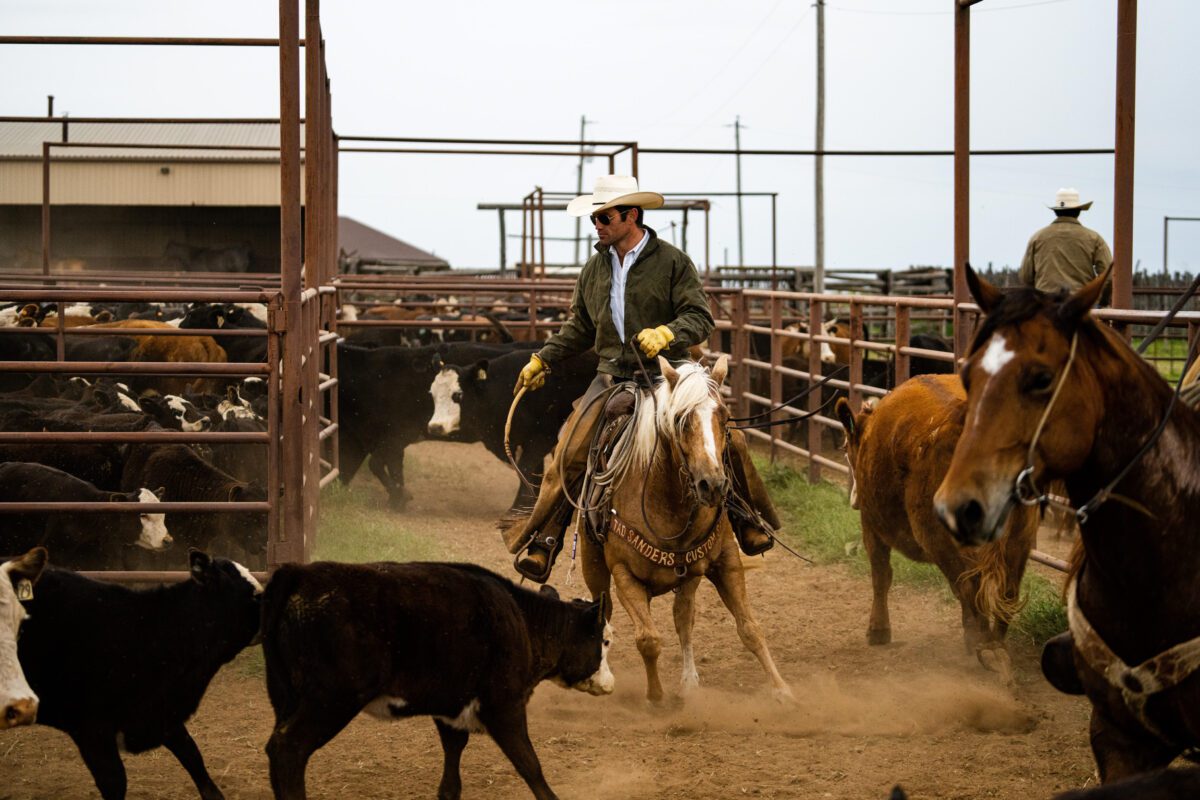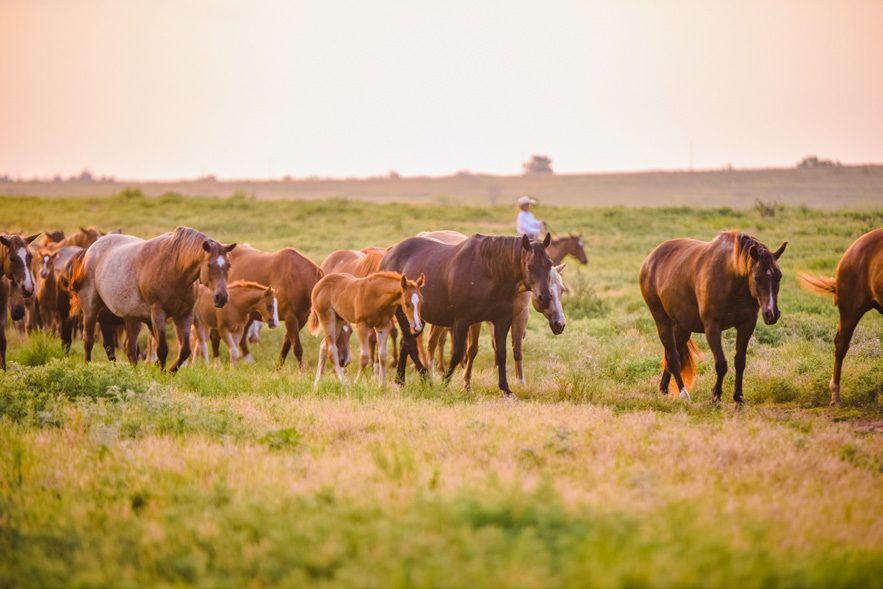Of the fifty states, Oklahoma ranks No. 2 for the economic impact/gross domestic product of the horse industry – sitting at 0.64% with 252,700 horses, right behind Kentucky.
Within the sector, horse breeding – a science-focused effort on producing genetically superior horses – requires a large financial investment with, typically, a strong ROI. Foals are raised for racing, competition, riding and other business endeavors.
Oklahoma’s oldest ranch under continuous family ownership, 7S Ranch or the Stuart Ranch, was founded in 1868 in Caddo, Choctaw Nation, Indian Territory. Now located in Waurika, the ranch is managed by its fifth generation of family leadership, Terry Stuart Forst, who assumed the role from her father in 1992.
“I think to start in the horse business, you go to work for someone you respect and want to train under,” says Stuart Forst. “This is a business full of hard work, long hours and dedication.”
An acclaimed 2007 Oklahoma Cattleman of the Year, Stuart Forst runs the 7S Quarter Horse Breeding Program, and has produced winning horses in many disciplines. The equine program produces and raises 30+ foals every year.


With an eye on the future, Stuart Forst and her sons have diversified and expanded the 7S Ranch for maximum longevity.
“Horses are raised in Oklahoma for ranch work, for show purposes in many disciplines, and for racing. Some are also raised for pulling feed wagons and other equipment,” she says. “Our horses primarily are used for ranch and show purposes. Our outfit uses horses everyday in ranch work, but those same horses have won numerous awards in the show pen.”
Oklahoma State University in Stillwater has a prestigious equine breeding and foaling program, with a state-of-the-art equine teaching facility.
A January 2020 OSU white paper, excerpted from the American Youth Council’s Horse Industry Handbook, says a successful horse breeder is “able to select superior horses for mating, and manages the environmental effects, such as nutrition, healthcare, training and injuries, to maximize the horse’s genetic potential. Since breeding for quality horses is not a simple matter, breeders must understand basic genetic principles and their applications to the horse business.”
Within the industry, it is understood that the most important aspects of a good breeding program target genetics and pedigree. They involve selecting outstanding breeding stock, with identification of individual records, pedigree records and progeny (offspring) information. In order to get desired physical characteristics and temperament, breeders consider an array of traits, characteristics and lineage.
“Our goal is to raise a versatile, athletic horse that is capable of doing his job,” Stuart Forst says. “Our broodmare band is generational, with sixth and seventh generations competing today in several disciplines.”
The OSU white paper says that breeder progress depends on four things: “consistent goal, heritability, selection intensity and generation interval. The plan should be to produce three to four foals out of each mare and then replace the mare with her best filly.”
Breeding requirements include maintaining the appropriate facilities and having the right people on hand. Those include facilities for mating and foaling with spacious turnout areas, safe breeding stalls and proper veterinary care. Also, breeders need to be aware of market demands and potential returns on investment.























